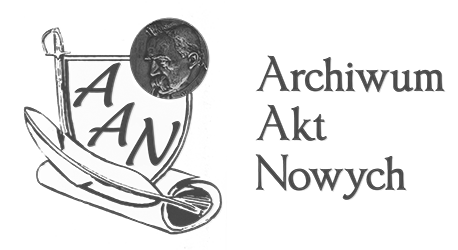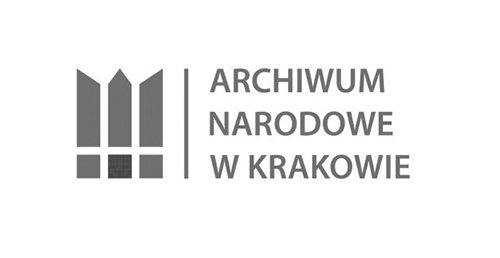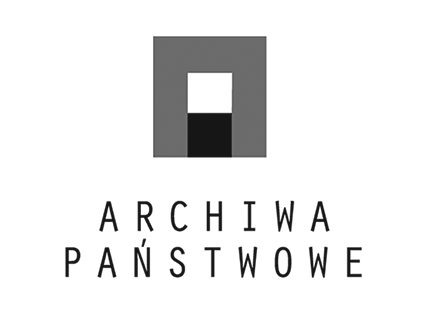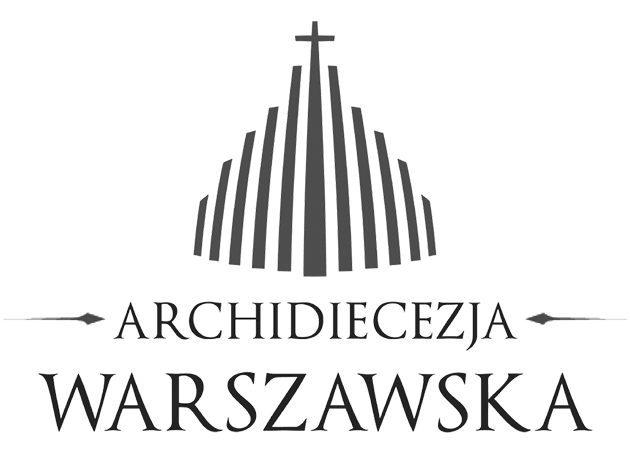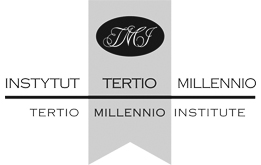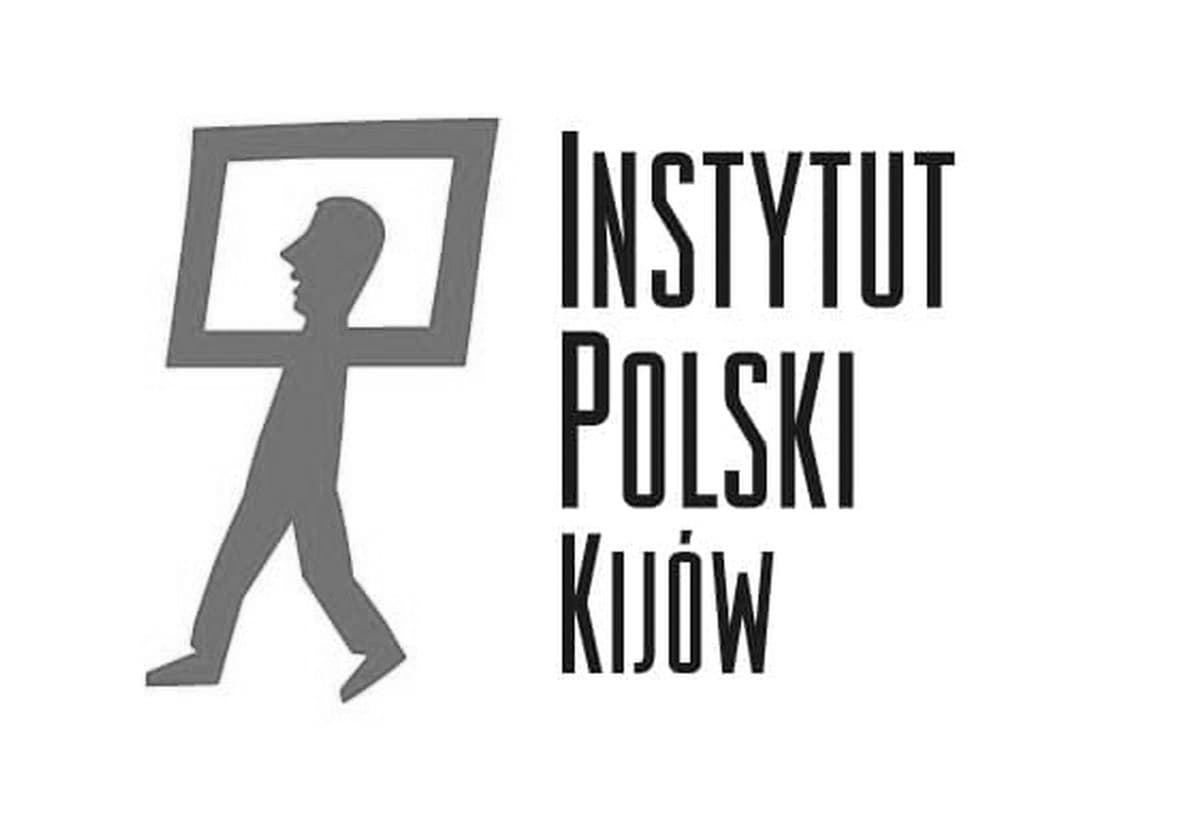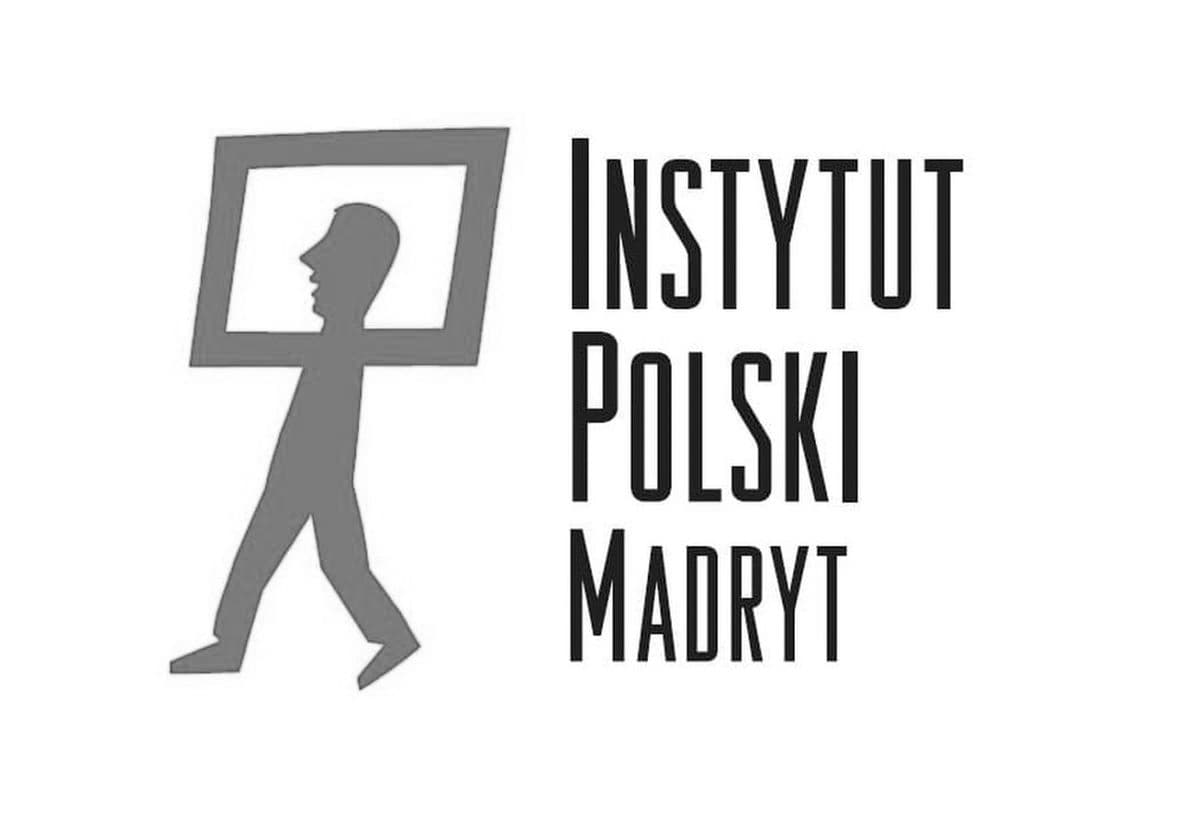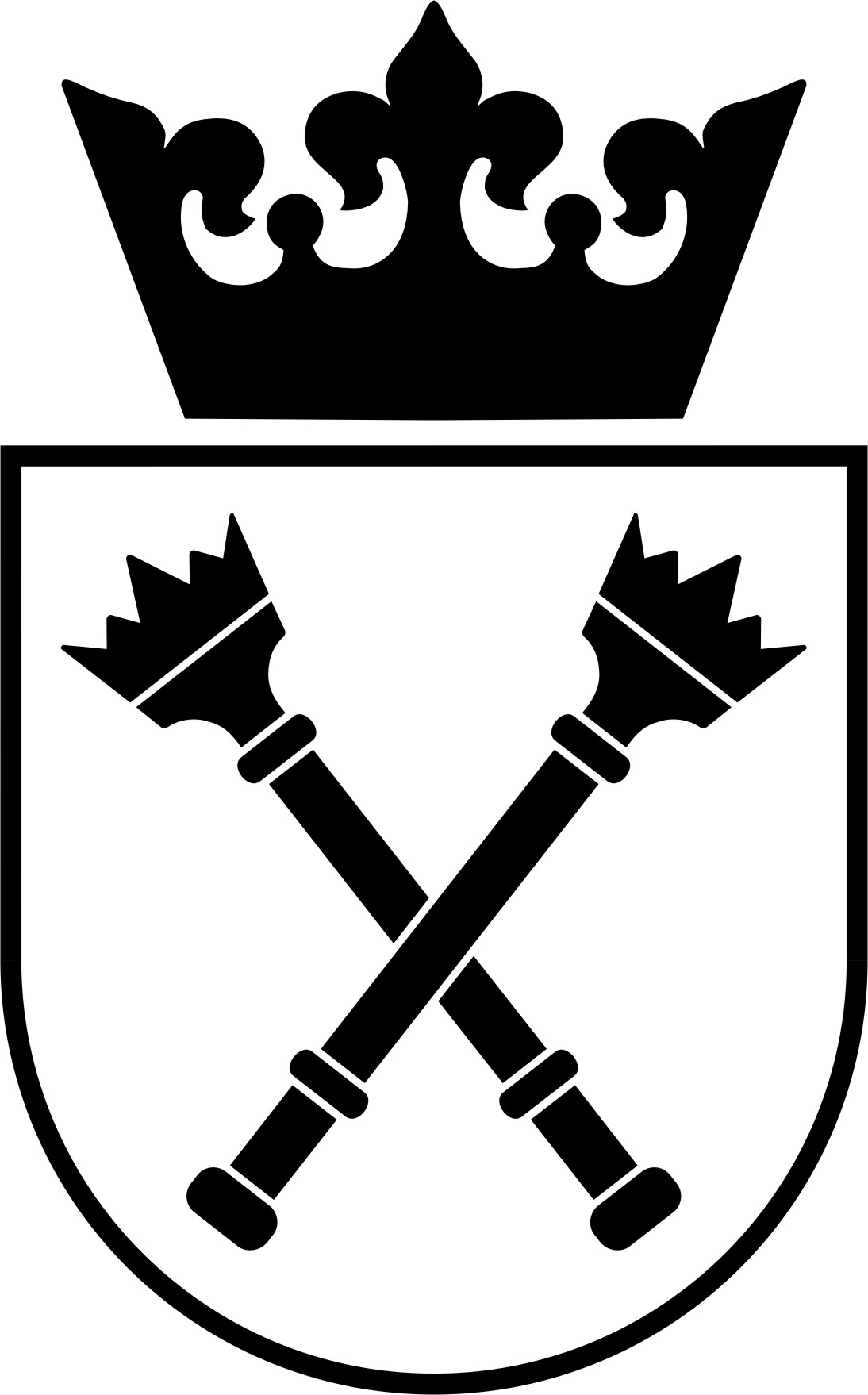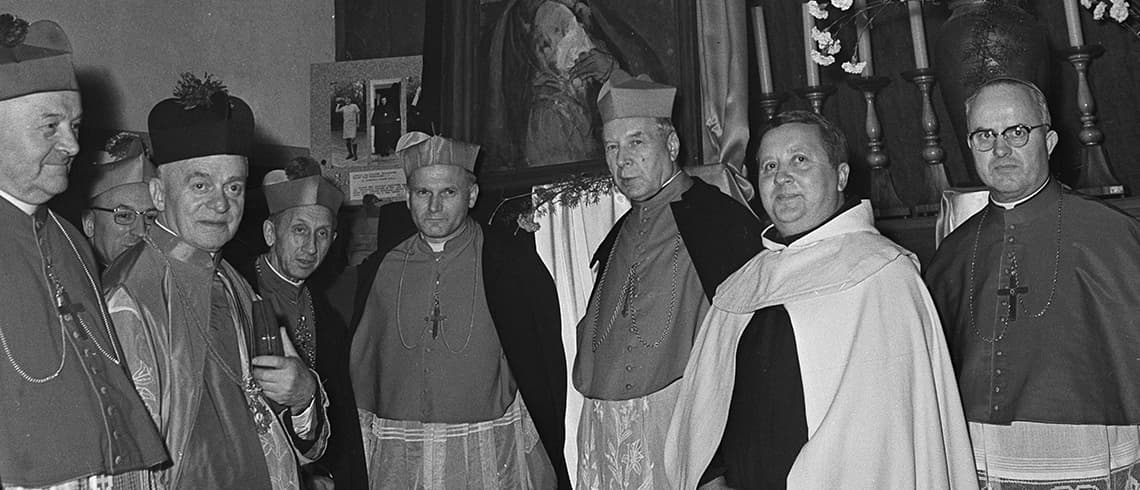Informations
Collection: List Episkopatu Polski do Episkopatu Niemiec
Available languages: PL, EN
Archive description
Copyrights
Notes
Archive description
EN
Identification:
Reference code: AAW SPP/II/3.27/21-30
Title: The Address of Polish Bishops to their German Brothers in the Pastoral Office of Christ
Date: b.d.
Size and medium: 10 kart; papierowy dokument archiwalny
Creator's name: Archiwum Archidiecezjalne Warszawskie
Repository: Archiwum Archidiecezjalne Warszawskie
Content: Maszynopis, kopia Orędzia Biskupów Polskich do ich Niemieckich Braci w Chrystusowym Urzędzie Pasterskim. Dokument nie zawiera adnotacji ani ręcznych podpisów. Dokument w języku polskim.
Persons index:
Make comments
Content of the document
Most Reverend Council Brothers,
Honored Brothers, let us permit ourselves, before the Council is concluded, to share with you, our nearest Western neighbors, with the cheerful news that next year - Anno Domini 1966 - the Christian Church in Poland along with the whole Polish nation are to celebrate the Millenium of their Christianization and national and political existence.
We hereby invite you in a brotherly and solemn manner to take part in the church celebrations of the Polish Millenium. The climax of Polish Te Deum laudamus will be in early May 1966 at Our Lady of Jasna Gora Church.
Let the herein reasoning provide a historical as well as updated commentary to our Millenium, and maybe with God's help will bring our two nations closer in the mutual dialogue.
This is a historical fact that in the year 966 Polish duke Mieszko I, influenced by his wife, the Czech Princess Dombrovka, received, along with his court, the Holy Sacrament of Baptism, as the first Polish duke. Since that time the Christian missionary action has spread, carried out by the Christian apostles across Poland. Boleslaw Chrobry (Boleslaw the Bald), a son and successor of Mieszko, continued the Christianization work launched by his father and the then pope Sylvester II gave him a consent to establish the Polish church hierarchy and the first archdiocese in Gniezno, with suffragan bishoprics in Cracow, Wroclaw, and Kolobrzeg. Until 1821 the archdiocese in Gniezno was under the authority of the bishopric of Wroclaw.
In 1000, Otton III, the ruler of the Roman Empire, along with Boleslaw the Bald went as pilgrims to the grave of the martyr Saint Adalbert, who died as a martyr on the territory of Baltic
Prussians. The rulers - Roman emperor and future Polish king - covered a long distance barefoot to see holy relics in Gniezno - they worshipped them with great piety and internal emotion. This is what the historical beginnings and foundations of Christian Poland as well as national and political unity looked like. They provided the basis for future rulers, kings, bishops, and priests to develop and consolidate religious, national, and political unity over a thousand years. Christian symbiosis of the Church and state has existed in Poland since the very beginning and has actually never been broken. Gradually "Polish” was associated with "Catholic” and such mindset became prevalent in the Polish people. Moreover, this gave birth to the Polish religious style, where religious and national factors were always interwoven and inseparable, which, of course, had its advantages and disadvantages.
Moreover, this religious style of life has always included - as its primary manifestation - Polish Marian cult. The oldest Polish churches were dedicated to the Holy Mother (including the archbishop cathedral in Gniezno); the oldest Polish song, a kind of a "lullaby of the Polish nation,” has been the Marian song "Bogurodzica Dziewica, Bogiem stawiona Maryja” ["God bearer and virgin, Mary blessed of God”], which is still performed. According to the tradition, its beginnings are associated with Saint Adalbert, just as the legend associates Polish white eagle with the Gniezno nest. Such traditions and folk legends, which are entwined like an ivy wine around the national and Christian aspects and make up the fabric that cannot be torn apart without being damaged. It is them that elucidate and - to a large degree - determine later history of the Polish culture as well as all our national and cultural development. This is how recent German historiography finds Poland's beginnings significant in political and cultural terms: "Encounter with the empire of Otto the Great, which took place a thousand years ago, enabled Poland to become part of the Latin Christian society, and owing to the impressive political astuteness of Mieszko I and Boleslaw the Bald, became an equal member of the Otto III empire - the empire based on the universal concept of incorporation all non-Byzantine world into the European Christiandom, which contributed critically to the formation of Eastern Europe.” Thus, the basis and conditions for future fruitful German-Polish relations and spreading the Occident culture were provided.
Unfortunately, these relations were not always that fruitful at the later stages of our history and in recent centuries metamorphosed into hereditary neighbors' hostility, which will be discussed later.
The inclusion of the new Polish kingdom into the West - effected with a help of the Papacy whom the Polish kings always served - resulted in the comprehensive and dynamic exchange between Poland and Western nations, particularly South-German, Burgundy, Flanders, Italy, France in Middle Ages as well as the Italian cities-states of the Renaissance, and Austria. Certainly, as the youngest state in the European Christian community Poland was, at least initially, rather a recipient than a donor. The trade exchange was not the only basis for the relations that developed in those times between Kalisz and Cracow - the royal capital in the Middle Ages - and Bamberg, Speyer, Mainz, Prague, Cologne, Lyon, Clairvaux and Ghent. The Benedictines, Cistercians, and later mendicant orders who came to Poland, a young Christian country, from Western Europe enjoyed an impressive growth here. In those times we adopted the German Magdeburg Law that considerably contributed to the foundation of our towns. German merchants, architects, artists and settlers also streamed to Poland and a large number of them became Polish; yet, they retained their German family names. Next to the big Cracow church of Saint Mary you can still find the epitaphs of numerous German families dating back to the Middle Ages, that in time became Polish. Unfortunately, Hitler and his followers drew the conclusion that Cracow and all the Polish territory was the area of German settlements and should be treated as a part of Germany. A classic example of the German - Polish cultural and artistic cooperation in the late Middle Ages was a world-famous sculptor Veit Stoss (Wit Stwosz) from Nuremberg who spent nearly all his professional life in Cracow and all his works were inspired by the spirit of Polish environment. He founded the artistic school there, where all generations of artists influenced and enriched the Polish culture.
Poles showed a deep respect for their Western Christian brothers who arrived here as the envoys of the real culture and never ignored their no-Polish origin. We owe much to the Western culture, including the German one.
Apostles and saints also came to us from the West and they are probably the most valuable gifts we have ever received from that part of Europe. We can still feel their blessed activities in a large number of places. Those most famous include Saint Bruno of Querfurt, called the "Bishop of Pagans,” who - in agreement with Boleslaw the Bold - carried out the work of evangelization of the Slavic and Lithuanian North-East. Others include Saint Hedwig (Jadwiga), the Duchess of Silesia, born in Andechs, wife of the Polish Piast ruler of Silesia, Henryk Brodaty (Henry the Bearded), the founder of the Cistercian female order in Trzebnica, where she was buried. Jadwiga became the greatest 13th - century benefactress of the Polish people in Silesia - a western region that was then part of Poland. It is a fact almost historically confirmed that she learnt Polish language to help poor Poles. After she died and was soon afterwards canonized, crowds of Polish and German people streamed to her grave in Trzebnica (later spelt Trebnitz). They still do and no one accuses our great saint of being of the German origin. Instead, she is by and large found - except a handful of fanatic nationalists - to be the best manifestation of the Christian bridge built between Poland and Germany. We are glad that so many Germans share this point of view. It is saints who are the best builders of the bridges between nations - they have sincere intentions and clean hands and do not seek robbing a brotherly nation of the language, customs, land or any assets. Instead, they offer valuable cultural assets and, which is even more valuable, they offer themselves and thereby plant a seed of their personality in the fertile soil of the neighboring, missionary country; this seed produces, according to the words spoken by the Savior, hundredfold fruit for the next generations. This is how we perceive Saint Hedwig of Silesia and all the other missionaries and martyrs who came here from the West to spread Christianity, including the apostle and martyr Adalbert - of Prague. This is what the huge difference between true Christian mission of spreading the culture and the so-called colonialism, rightly condemned today, consists in.
Following the year 1200, when Poland became more and more Christian regarding its population and institutions, Polish saints began to emerge. As early as in the 12th century, the bishop of Cracow Stanislaus Szczepanowski, confessor and martyr, was murdered at the altar by King Boleslav Smialy (Bole- slaw the Brave) who later died as a pious penitent in exile in a monastery in Upper Austria). At the Saint Stanislaus' tomb in the Cracow Cathedral, a majestic song in his honor was composed, which is still sung in Latin across Poland: Gaude Mater Polonia, prole faecunda nobili.
Then a triple star of the Polish saints emerged on the firmament. They came from the family of Odrowaz (old family that had a seat on the Oder River, in Upper Silesia). The greatest one - Saint Hyacinth (Jacek in Polish) - was a Dominican apostle who travelled across Eastern Europe from Moravia to the Baltic Sea, from Lithuania to Kiev. His relative, the Blessed Czeslaw, also Dominican, defended the city of Wroclaw against Mongols. Today he rests in the reconstructed church of Saint Adalbert (Wojciech), worshiped by the pious people as the patron of the city rebuilt after 1945.
The third family member, Blessed Bronislawa, Czeslaw's sister, member of the Silesian order of Saint Norbert, rests in Cracow. A number of stars on the firmament of Polish saints was on a constant increase: Blessed Cunegunda in Nowy Sacz, Blessed Bogumil and Jolanta in Gniezno, Blessed Ladyslaw in Mas- ovia, Saintly Jadwiga (Hedwig) at the royal castle in Cracow - new Polish Jadwiga awaiting canonization. Later saints and martyrs include Saint Stanislaus Kostka, a Jesuit novice in Rome, Saint Jan Kanty, a professor at the Jagiellonian University in Cracow, Saint Andrzej Bobola, a martyr from eastern Poland, canonized in 1938, Franciscan Father Maksymilian Kolbe, a martyr from the concentration camp in Auschwitz, who voluntarily sacrificed his life for his brother. Nowadays, nearly 30 Polish candidates await canonization or beatification in Rome. Our nation worships his saints and finds them the most noble fruit Christian nation can bear.
The above-mentioned Cracow university was, along with Prague, the first such educational institution in Eastern European. Founded in 1363 by the King Casimir the Great was throughout ages the center of radiation of the Polish and European culture in the best meaning of this word. In the 15th and 16th centuries, when Silesian and Piast lands were no longer part of the Polish Kingdom, thousands of students and professors coming from Wroclaw, Raciborz, Gliwice, Glo- gow, Nysa, Opole, and many other Silesian towns studied and taught in Cracow. Their family names and names of their birthplaces can be found in the old university registers. Mikolaj Kopernik (Nicolaus Copernicus) name is also mentioned there. He was an astronomy student taught by Professor Bylica. Other Cracow students who contributed to the European culture include top-class mathematicians, physicians, doctors, lawyers, astronomers, historians, and philosophers of culture. One of them was famous Pawel Wlodkowic, Rector of the Jagiel- lonian University, who, during the sessions of the Council of Konstanz, promoted religious and human tolerance with great openness and defended his point of view with the highest scientific authority, which was incredible in those times. An act of great personal courage was his opinion that the pagan Eastern-European peoples are not the wild animals to be converted with fire and sword since they enjoy the same natural human rights as Christians.
In a way, Wtodkowic's opinions provided a classical manifestation of the tolerant and liberal Polish thought. His theses were directed against the German order of Teutonic Knights - the so-called Knights of the Cross - who tried to convert natives in the Slavic North and Prussian states with fire and sword. Over the centuries they became a horrible and most embarrassing load for the European Christianity and its symbol - the cross - but also the Church in whose name they acted. Even today, after so many generations and years Poles find the expression Knight of the Cross a fearsome insult and, unfortunately, for ages identified, all too often, with Germandom.
Later, the lands settled by Teutonic Knights became the homeland of Prussians whose actions brought shame to everything that is German on the Polish territory. In the historical development they are represented by such people as Prince Albert of Prussia, Friedrich the Great (Friedrich II), Bismarck, and finally Hitler (which was a kind of its climax).
Friedrich the Great was recognized by the Polish nation as the main initiator of the partitions of Poland and this opinion was to a large extent justified. For 150 years millions of Poles lived in the partitions done by the then three powers - Prussia, Russia, and Austria. It was not until 1918, when the World War I ended, that Poland could slowly rise from the grave, extremely weak, facing huge problems, yet ready to start again its sovereign existence.
After a short, 20-year long, period of independence (19181939), a disaster - euphemistically called the World War II - came and although the German invasion was definitely not provoked by Poles, it was designed as an act of total destruction and extermination of the Polish nation. A horribly black night fell over our poor Homeland. We had not seen such black night for generations. It is commonly called the "German occupation” and under such term has become part of the Polish history. We all were hopeless and defenseless. Concentration camps were set up across Poland, where crematory chimneys smoked days and nights. Over 6 million Polish citizens, whose majority was of the Jewish origin, paid the highest price for the occupation. A huge number of the intelligentsia prominent representatives was exterminated; 2 000 priests and 5 bishops (a fourth part of the then Episcopate members) were murdered in the concentration camps. Hundreds of priests and tens of thousands of civilians were executed at their places of residence when the war broke out (just in Chelmno diocese 278 were murdered). The diocese of Wloclawek lost 48 percent of priests and the diocese of Chelmno - 47 percent. A large number of priests were displaced. All universities, high schools and seminaries were closed down. Each German uniform, not just that of SS, filled Poles with horror but also became an object of hatred toward Germans. All Polish families mourned those who were Germans' victims. We do not want to enumerate all the damages to avoid reopening the wounds that have not been healed yet. We remind you of that horrible Polish night so that you could easier understand us and our present mindset... We try to forget. We hope that time - this great divine kairos - will allow for healing spiritual wounds. After all that happened in the past, unfortunately not distant one, it is difficult to be surprised that all Polish nation feels significance of the elementary need for security and still takes a mistrustful attitude toward its closest Western neighbors.
Such mental attitude is - one might say - a problem of our generations, which, God willing, and with some goodwill will disappear and must disappear. During the most severe political crises and spiritual sufferings of the nation, over its century-long split-ups and dilemmas, the Catholic Church and Holy Virgin, along with the Polish family, were always the anchor of salvation and symbols of the national unity. In all the battles for freedom during the times of oppression Poles mounted the barricades with their symbols: white eagle on one side and a picture of Holy Mother on the other side of the freedom's banners. Their motto has always been: "For your and our liberty."
This is the outline of the history of the 1000-year long development of the Polish culture, with particular reference to the Polish - German neighborhood. Our relations are still considerably strained and this is enhanced by the thorny problem of our neighborhood. We can well understand that for Germans the Polish border on the Oder and Neisse Rivers is a bitter fruit of the last war, mass extinction, just as the suffering of millions of German refugees and expellees. (This was the consequence of the inter-allied order of the victorious powers, issued at the Potsdam conference in 1945). The majority of the German population left those lands in fear of the Russian front and fled to the West. As our Homeland emerged from that mass extinction not as victorious but an extremely weak country, this is the question of existence and not a larger "Leb- ensraum") What is worse, there were plans to compress the 30-million nation into the corridor of some "Generalgouverne- ment" from the years 1939-1945: without western as well as eastern lands. Since 1945, millions of Poles were forced to leave eastern lands and move to the "Potsdam western land." On the other hand, they had nowhere to go, as the so- called Generalgouvernement laid in rubble and ruins. Waves of destruction of the last war did not engulf the country just once, as they did in Germany, but since 1914 - like the knights of Apocalypse - many times back and forth, each time leaving behind ashes, ruins, diseases, plagues, tears, death, and a growing sense of revenge and hatred.
Dear German Brothers, do not hold it against us that we enumerate the events from the last stage of our Millennium. We are not going to accuse you but rather justify ourselves. We know very well how many Germans lived under the inhuman, national - socialist pressure. We know about terrible internal torments the righteous and responsible German bishops suffered - to name only three of them: Cardinal Faulhaber, von Galen or Preysing. We know about the "White Rose” martyrs, the resistance fighters of the 20 July, a large number of priests and laics who sacrificed their lives (Lichtenberg, Metzger, Klausener, and many others). Thousands of Germans - Christians as well as communists - shared the fate of their Polish brothers in the concentration camps...
And in spite of it all, despite the situation almost hopelessly burdened with the past, we are calling to you - our honorable Brothers - let us try to forget. No polemics, no more Cold War but rather the beginning of a dialogue the Council and Pope Paul VI are striving for. If goodwill is found on both sides - and no one should doubt about it - a serious dialogue must certainly succeed and in time bear good fruit, notwithstanding any thorny problems.
It seems to be our imperative, here, at the Council, to initiate the dialogue based on the bishops' pastoral platform without hesitation, to better know our folk traditions, the religious cult, and a style of life, that are all rooted in the past and conditioned by this cultural past.
We have sought through the so-called Great Novena, under the high patronage of the holiest Virgin Mary, to prepare ourselves and the entire Polish Christian community for Millennium celebrations. For nine years (1957 through 1965) we have acted in the spirit of the words per Mariam ad Jesum to dedicate the pulpits across Poland, along with the whole institutional body of the Church, to the crucial contemporary pastoral problems and social tasks, such as social dangers, reconstruction of the national conscience, marriage institution, family life, religious education, and the like.
Moreover, all the Polish Christians have taken an active part in the Council through prayers, sacrifices, and acts of repentance. Propitiatory services were held in all parishes during the Council sessions. In Czestochowa, the holy picture of the Mother of God, as well as confession booths and their Communion benches were besieged for weeks by the parish delegations who wanted to help the Council by personal sacrifice and prayer.
Finally, this year - the last of Great Novena - we have consecrated ourselves to the Mother of God: bishops, priests, members of religious orders, and all Polish laity. It is only help and grace of our Savior that can protect us against enormous moral and social dangers threatening the soul of our nation and its biological existence. We want to ask for this help and grace through the intercession of His Mother, the Holiest Virgin Mary. Full of child-like trust we throw ourselves into Her arms. It is only in this way that we can become free internally as servants or even "God's slaves” (as Saint Paul puts it) but at the same time free children.
We ask you, the Catholic Shepherds of the German nation, to seek in your own way to join in our celebration of Christian Millenium: be it through prayer or be it through a special memorial day. We shall be grateful to you for each and every such gesture. Moreover, we ask you to extend our greetings and appreciation to the German Evangelical Brethren who are trying along with you and us to find solutions to our problems.
In this most Christian but also human spirit, we reach out our hands to you, sitting here on the benches of the Council, which is soon to be concluded, granting forgiveness and asking for forgiveness. And if you, the German bishops and Council Fathers, grasp our hands in a brotherly manner, we will be able to celebrate our Millenium with clear conscience and in a true Christian spirit.
We invite you most cordially to come to Poland to our celebration. May the merciful Savior and the Virgin Mary, the Queen of Poland, Regina Mundi and Mater Ecclesiae grant this.
Rome, 18 November 1965
Honored Brothers, let us permit ourselves, before the Council is concluded, to share with you, our nearest Western neighbors, with the cheerful news that next year - Anno Domini 1966 - the Christian Church in Poland along with the whole Polish nation are to celebrate the Millenium of their Christianization and national and political existence.
We hereby invite you in a brotherly and solemn manner to take part in the church celebrations of the Polish Millenium. The climax of Polish Te Deum laudamus will be in early May 1966 at Our Lady of Jasna Gora Church.
Let the herein reasoning provide a historical as well as updated commentary to our Millenium, and maybe with God's help will bring our two nations closer in the mutual dialogue.
This is a historical fact that in the year 966 Polish duke Mieszko I, influenced by his wife, the Czech Princess Dombrovka, received, along with his court, the Holy Sacrament of Baptism, as the first Polish duke. Since that time the Christian missionary action has spread, carried out by the Christian apostles across Poland. Boleslaw Chrobry (Boleslaw the Bald), a son and successor of Mieszko, continued the Christianization work launched by his father and the then pope Sylvester II gave him a consent to establish the Polish church hierarchy and the first archdiocese in Gniezno, with suffragan bishoprics in Cracow, Wroclaw, and Kolobrzeg. Until 1821 the archdiocese in Gniezno was under the authority of the bishopric of Wroclaw.
In 1000, Otton III, the ruler of the Roman Empire, along with Boleslaw the Bald went as pilgrims to the grave of the martyr Saint Adalbert, who died as a martyr on the territory of Baltic
Prussians. The rulers - Roman emperor and future Polish king - covered a long distance barefoot to see holy relics in Gniezno - they worshipped them with great piety and internal emotion. This is what the historical beginnings and foundations of Christian Poland as well as national and political unity looked like. They provided the basis for future rulers, kings, bishops, and priests to develop and consolidate religious, national, and political unity over a thousand years. Christian symbiosis of the Church and state has existed in Poland since the very beginning and has actually never been broken. Gradually "Polish” was associated with "Catholic” and such mindset became prevalent in the Polish people. Moreover, this gave birth to the Polish religious style, where religious and national factors were always interwoven and inseparable, which, of course, had its advantages and disadvantages.
Moreover, this religious style of life has always included - as its primary manifestation - Polish Marian cult. The oldest Polish churches were dedicated to the Holy Mother (including the archbishop cathedral in Gniezno); the oldest Polish song, a kind of a "lullaby of the Polish nation,” has been the Marian song "Bogurodzica Dziewica, Bogiem stawiona Maryja” ["God bearer and virgin, Mary blessed of God”], which is still performed. According to the tradition, its beginnings are associated with Saint Adalbert, just as the legend associates Polish white eagle with the Gniezno nest. Such traditions and folk legends, which are entwined like an ivy wine around the national and Christian aspects and make up the fabric that cannot be torn apart without being damaged. It is them that elucidate and - to a large degree - determine later history of the Polish culture as well as all our national and cultural development. This is how recent German historiography finds Poland's beginnings significant in political and cultural terms: "Encounter with the empire of Otto the Great, which took place a thousand years ago, enabled Poland to become part of the Latin Christian society, and owing to the impressive political astuteness of Mieszko I and Boleslaw the Bald, became an equal member of the Otto III empire - the empire based on the universal concept of incorporation all non-Byzantine world into the European Christiandom, which contributed critically to the formation of Eastern Europe.” Thus, the basis and conditions for future fruitful German-Polish relations and spreading the Occident culture were provided.
Unfortunately, these relations were not always that fruitful at the later stages of our history and in recent centuries metamorphosed into hereditary neighbors' hostility, which will be discussed later.
The inclusion of the new Polish kingdom into the West - effected with a help of the Papacy whom the Polish kings always served - resulted in the comprehensive and dynamic exchange between Poland and Western nations, particularly South-German, Burgundy, Flanders, Italy, France in Middle Ages as well as the Italian cities-states of the Renaissance, and Austria. Certainly, as the youngest state in the European Christian community Poland was, at least initially, rather a recipient than a donor. The trade exchange was not the only basis for the relations that developed in those times between Kalisz and Cracow - the royal capital in the Middle Ages - and Bamberg, Speyer, Mainz, Prague, Cologne, Lyon, Clairvaux and Ghent. The Benedictines, Cistercians, and later mendicant orders who came to Poland, a young Christian country, from Western Europe enjoyed an impressive growth here. In those times we adopted the German Magdeburg Law that considerably contributed to the foundation of our towns. German merchants, architects, artists and settlers also streamed to Poland and a large number of them became Polish; yet, they retained their German family names. Next to the big Cracow church of Saint Mary you can still find the epitaphs of numerous German families dating back to the Middle Ages, that in time became Polish. Unfortunately, Hitler and his followers drew the conclusion that Cracow and all the Polish territory was the area of German settlements and should be treated as a part of Germany. A classic example of the German - Polish cultural and artistic cooperation in the late Middle Ages was a world-famous sculptor Veit Stoss (Wit Stwosz) from Nuremberg who spent nearly all his professional life in Cracow and all his works were inspired by the spirit of Polish environment. He founded the artistic school there, where all generations of artists influenced and enriched the Polish culture.
Poles showed a deep respect for their Western Christian brothers who arrived here as the envoys of the real culture and never ignored their no-Polish origin. We owe much to the Western culture, including the German one.
Apostles and saints also came to us from the West and they are probably the most valuable gifts we have ever received from that part of Europe. We can still feel their blessed activities in a large number of places. Those most famous include Saint Bruno of Querfurt, called the "Bishop of Pagans,” who - in agreement with Boleslaw the Bold - carried out the work of evangelization of the Slavic and Lithuanian North-East. Others include Saint Hedwig (Jadwiga), the Duchess of Silesia, born in Andechs, wife of the Polish Piast ruler of Silesia, Henryk Brodaty (Henry the Bearded), the founder of the Cistercian female order in Trzebnica, where she was buried. Jadwiga became the greatest 13th - century benefactress of the Polish people in Silesia - a western region that was then part of Poland. It is a fact almost historically confirmed that she learnt Polish language to help poor Poles. After she died and was soon afterwards canonized, crowds of Polish and German people streamed to her grave in Trzebnica (later spelt Trebnitz). They still do and no one accuses our great saint of being of the German origin. Instead, she is by and large found - except a handful of fanatic nationalists - to be the best manifestation of the Christian bridge built between Poland and Germany. We are glad that so many Germans share this point of view. It is saints who are the best builders of the bridges between nations - they have sincere intentions and clean hands and do not seek robbing a brotherly nation of the language, customs, land or any assets. Instead, they offer valuable cultural assets and, which is even more valuable, they offer themselves and thereby plant a seed of their personality in the fertile soil of the neighboring, missionary country; this seed produces, according to the words spoken by the Savior, hundredfold fruit for the next generations. This is how we perceive Saint Hedwig of Silesia and all the other missionaries and martyrs who came here from the West to spread Christianity, including the apostle and martyr Adalbert - of Prague. This is what the huge difference between true Christian mission of spreading the culture and the so-called colonialism, rightly condemned today, consists in.
Following the year 1200, when Poland became more and more Christian regarding its population and institutions, Polish saints began to emerge. As early as in the 12th century, the bishop of Cracow Stanislaus Szczepanowski, confessor and martyr, was murdered at the altar by King Boleslav Smialy (Bole- slaw the Brave) who later died as a pious penitent in exile in a monastery in Upper Austria). At the Saint Stanislaus' tomb in the Cracow Cathedral, a majestic song in his honor was composed, which is still sung in Latin across Poland: Gaude Mater Polonia, prole faecunda nobili.
Then a triple star of the Polish saints emerged on the firmament. They came from the family of Odrowaz (old family that had a seat on the Oder River, in Upper Silesia). The greatest one - Saint Hyacinth (Jacek in Polish) - was a Dominican apostle who travelled across Eastern Europe from Moravia to the Baltic Sea, from Lithuania to Kiev. His relative, the Blessed Czeslaw, also Dominican, defended the city of Wroclaw against Mongols. Today he rests in the reconstructed church of Saint Adalbert (Wojciech), worshiped by the pious people as the patron of the city rebuilt after 1945.
The third family member, Blessed Bronislawa, Czeslaw's sister, member of the Silesian order of Saint Norbert, rests in Cracow. A number of stars on the firmament of Polish saints was on a constant increase: Blessed Cunegunda in Nowy Sacz, Blessed Bogumil and Jolanta in Gniezno, Blessed Ladyslaw in Mas- ovia, Saintly Jadwiga (Hedwig) at the royal castle in Cracow - new Polish Jadwiga awaiting canonization. Later saints and martyrs include Saint Stanislaus Kostka, a Jesuit novice in Rome, Saint Jan Kanty, a professor at the Jagiellonian University in Cracow, Saint Andrzej Bobola, a martyr from eastern Poland, canonized in 1938, Franciscan Father Maksymilian Kolbe, a martyr from the concentration camp in Auschwitz, who voluntarily sacrificed his life for his brother. Nowadays, nearly 30 Polish candidates await canonization or beatification in Rome. Our nation worships his saints and finds them the most noble fruit Christian nation can bear.
The above-mentioned Cracow university was, along with Prague, the first such educational institution in Eastern European. Founded in 1363 by the King Casimir the Great was throughout ages the center of radiation of the Polish and European culture in the best meaning of this word. In the 15th and 16th centuries, when Silesian and Piast lands were no longer part of the Polish Kingdom, thousands of students and professors coming from Wroclaw, Raciborz, Gliwice, Glo- gow, Nysa, Opole, and many other Silesian towns studied and taught in Cracow. Their family names and names of their birthplaces can be found in the old university registers. Mikolaj Kopernik (Nicolaus Copernicus) name is also mentioned there. He was an astronomy student taught by Professor Bylica. Other Cracow students who contributed to the European culture include top-class mathematicians, physicians, doctors, lawyers, astronomers, historians, and philosophers of culture. One of them was famous Pawel Wlodkowic, Rector of the Jagiel- lonian University, who, during the sessions of the Council of Konstanz, promoted religious and human tolerance with great openness and defended his point of view with the highest scientific authority, which was incredible in those times. An act of great personal courage was his opinion that the pagan Eastern-European peoples are not the wild animals to be converted with fire and sword since they enjoy the same natural human rights as Christians.
In a way, Wtodkowic's opinions provided a classical manifestation of the tolerant and liberal Polish thought. His theses were directed against the German order of Teutonic Knights - the so-called Knights of the Cross - who tried to convert natives in the Slavic North and Prussian states with fire and sword. Over the centuries they became a horrible and most embarrassing load for the European Christianity and its symbol - the cross - but also the Church in whose name they acted. Even today, after so many generations and years Poles find the expression Knight of the Cross a fearsome insult and, unfortunately, for ages identified, all too often, with Germandom.
Later, the lands settled by Teutonic Knights became the homeland of Prussians whose actions brought shame to everything that is German on the Polish territory. In the historical development they are represented by such people as Prince Albert of Prussia, Friedrich the Great (Friedrich II), Bismarck, and finally Hitler (which was a kind of its climax).
Friedrich the Great was recognized by the Polish nation as the main initiator of the partitions of Poland and this opinion was to a large extent justified. For 150 years millions of Poles lived in the partitions done by the then three powers - Prussia, Russia, and Austria. It was not until 1918, when the World War I ended, that Poland could slowly rise from the grave, extremely weak, facing huge problems, yet ready to start again its sovereign existence.
After a short, 20-year long, period of independence (19181939), a disaster - euphemistically called the World War II - came and although the German invasion was definitely not provoked by Poles, it was designed as an act of total destruction and extermination of the Polish nation. A horribly black night fell over our poor Homeland. We had not seen such black night for generations. It is commonly called the "German occupation” and under such term has become part of the Polish history. We all were hopeless and defenseless. Concentration camps were set up across Poland, where crematory chimneys smoked days and nights. Over 6 million Polish citizens, whose majority was of the Jewish origin, paid the highest price for the occupation. A huge number of the intelligentsia prominent representatives was exterminated; 2 000 priests and 5 bishops (a fourth part of the then Episcopate members) were murdered in the concentration camps. Hundreds of priests and tens of thousands of civilians were executed at their places of residence when the war broke out (just in Chelmno diocese 278 were murdered). The diocese of Wloclawek lost 48 percent of priests and the diocese of Chelmno - 47 percent. A large number of priests were displaced. All universities, high schools and seminaries were closed down. Each German uniform, not just that of SS, filled Poles with horror but also became an object of hatred toward Germans. All Polish families mourned those who were Germans' victims. We do not want to enumerate all the damages to avoid reopening the wounds that have not been healed yet. We remind you of that horrible Polish night so that you could easier understand us and our present mindset... We try to forget. We hope that time - this great divine kairos - will allow for healing spiritual wounds. After all that happened in the past, unfortunately not distant one, it is difficult to be surprised that all Polish nation feels significance of the elementary need for security and still takes a mistrustful attitude toward its closest Western neighbors.
Such mental attitude is - one might say - a problem of our generations, which, God willing, and with some goodwill will disappear and must disappear. During the most severe political crises and spiritual sufferings of the nation, over its century-long split-ups and dilemmas, the Catholic Church and Holy Virgin, along with the Polish family, were always the anchor of salvation and symbols of the national unity. In all the battles for freedom during the times of oppression Poles mounted the barricades with their symbols: white eagle on one side and a picture of Holy Mother on the other side of the freedom's banners. Their motto has always been: "For your and our liberty."
This is the outline of the history of the 1000-year long development of the Polish culture, with particular reference to the Polish - German neighborhood. Our relations are still considerably strained and this is enhanced by the thorny problem of our neighborhood. We can well understand that for Germans the Polish border on the Oder and Neisse Rivers is a bitter fruit of the last war, mass extinction, just as the suffering of millions of German refugees and expellees. (This was the consequence of the inter-allied order of the victorious powers, issued at the Potsdam conference in 1945). The majority of the German population left those lands in fear of the Russian front and fled to the West. As our Homeland emerged from that mass extinction not as victorious but an extremely weak country, this is the question of existence and not a larger "Leb- ensraum") What is worse, there were plans to compress the 30-million nation into the corridor of some "Generalgouverne- ment" from the years 1939-1945: without western as well as eastern lands. Since 1945, millions of Poles were forced to leave eastern lands and move to the "Potsdam western land." On the other hand, they had nowhere to go, as the so- called Generalgouvernement laid in rubble and ruins. Waves of destruction of the last war did not engulf the country just once, as they did in Germany, but since 1914 - like the knights of Apocalypse - many times back and forth, each time leaving behind ashes, ruins, diseases, plagues, tears, death, and a growing sense of revenge and hatred.
Dear German Brothers, do not hold it against us that we enumerate the events from the last stage of our Millennium. We are not going to accuse you but rather justify ourselves. We know very well how many Germans lived under the inhuman, national - socialist pressure. We know about terrible internal torments the righteous and responsible German bishops suffered - to name only three of them: Cardinal Faulhaber, von Galen or Preysing. We know about the "White Rose” martyrs, the resistance fighters of the 20 July, a large number of priests and laics who sacrificed their lives (Lichtenberg, Metzger, Klausener, and many others). Thousands of Germans - Christians as well as communists - shared the fate of their Polish brothers in the concentration camps...
And in spite of it all, despite the situation almost hopelessly burdened with the past, we are calling to you - our honorable Brothers - let us try to forget. No polemics, no more Cold War but rather the beginning of a dialogue the Council and Pope Paul VI are striving for. If goodwill is found on both sides - and no one should doubt about it - a serious dialogue must certainly succeed and in time bear good fruit, notwithstanding any thorny problems.
It seems to be our imperative, here, at the Council, to initiate the dialogue based on the bishops' pastoral platform without hesitation, to better know our folk traditions, the religious cult, and a style of life, that are all rooted in the past and conditioned by this cultural past.
We have sought through the so-called Great Novena, under the high patronage of the holiest Virgin Mary, to prepare ourselves and the entire Polish Christian community for Millennium celebrations. For nine years (1957 through 1965) we have acted in the spirit of the words per Mariam ad Jesum to dedicate the pulpits across Poland, along with the whole institutional body of the Church, to the crucial contemporary pastoral problems and social tasks, such as social dangers, reconstruction of the national conscience, marriage institution, family life, religious education, and the like.
Moreover, all the Polish Christians have taken an active part in the Council through prayers, sacrifices, and acts of repentance. Propitiatory services were held in all parishes during the Council sessions. In Czestochowa, the holy picture of the Mother of God, as well as confession booths and their Communion benches were besieged for weeks by the parish delegations who wanted to help the Council by personal sacrifice and prayer.
Finally, this year - the last of Great Novena - we have consecrated ourselves to the Mother of God: bishops, priests, members of religious orders, and all Polish laity. It is only help and grace of our Savior that can protect us against enormous moral and social dangers threatening the soul of our nation and its biological existence. We want to ask for this help and grace through the intercession of His Mother, the Holiest Virgin Mary. Full of child-like trust we throw ourselves into Her arms. It is only in this way that we can become free internally as servants or even "God's slaves” (as Saint Paul puts it) but at the same time free children.
We ask you, the Catholic Shepherds of the German nation, to seek in your own way to join in our celebration of Christian Millenium: be it through prayer or be it through a special memorial day. We shall be grateful to you for each and every such gesture. Moreover, we ask you to extend our greetings and appreciation to the German Evangelical Brethren who are trying along with you and us to find solutions to our problems.
In this most Christian but also human spirit, we reach out our hands to you, sitting here on the benches of the Council, which is soon to be concluded, granting forgiveness and asking for forgiveness. And if you, the German bishops and Council Fathers, grasp our hands in a brotherly manner, we will be able to celebrate our Millenium with clear conscience and in a true Christian spirit.
We invite you most cordially to come to Poland to our celebration. May the merciful Savior and the Virgin Mary, the Queen of Poland, Regina Mundi and Mater Ecclesiae grant this.
Rome, 18 November 1965
Project implemented by: 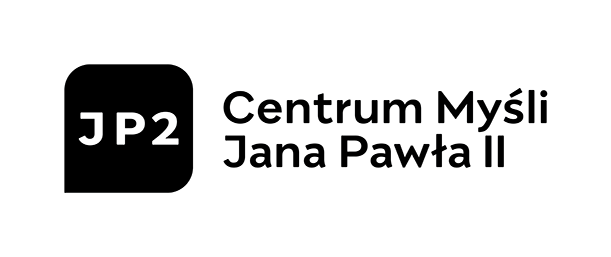

Project co-financed by: 

Patronage: 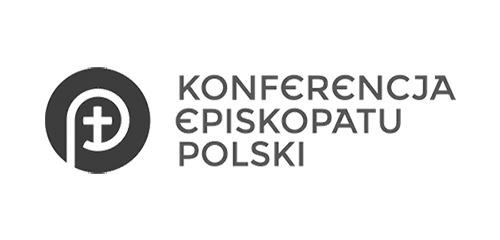

Partners: 